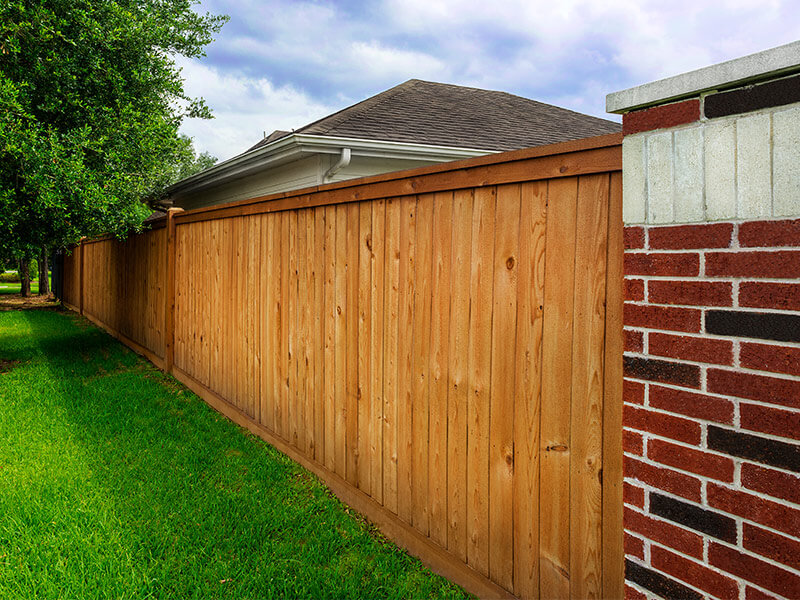Trustworthy Fence Staining Service: Preserve and Rejuvenate Your Fence!
How to Choose the Right Fencing Discoloration for Your Residential Property
When it comes to boosting the appearance and sturdiness of your residential property's fencing, selecting the ideal tarnish is a vital decision that calls for mindful factor to consider. Just how can you make certain that you select the ideal fencing stain that lines up with your residential or commercial property's style and upkeep needs?
Recognizing Wood Types
To choose the ideal fence tarnish, it is important to have a detailed understanding of the different kinds of wood frequently made use of for fencing. The choice of timber plays an essential role in identifying the long life and overall looks of the fence. Cedar is a popular selection because of its all-natural resistance to decay and pests, making it a durable alternative for outdoor frameworks. Pine is one more common timber used in secure fencing, known for its cost and convenience of discoloration. However, ache is more susceptible to bending and rotting contrasted to cedar. Redwood is a premium option recognized for its striking look and all-natural sturdiness, though it comes with a greater price. When selecting a fence tarnish, it is very important to consider the type of timber being used to make certain compatibility and optimum defense. Understanding the attributes of different wood types will aid you make an educated choice when it involves picking the best fence tarnish for your residential property - Fence Staining Nashville TN.
Choosing the Right Shade
Picking a proper tone for your fence stain is an important choice that significantly affects the general aesthetic appeal of your building. The color you choose need to complement the style of your home, mix harmoniously with the environments, and reflect your personal taste. When picking a color, think about the existing color palette of your building. For an all-natural look, earthy tones like browns, eco-friendlies, or grays function well. These shades can aid the fence blend into the landscape and create a natural look. If you favor an even more contemporary or bold look, think about deciding for darker tones like black or deep charcoal for a striking comparison. Lighter colors such as whites or light grays can make a fence appear bigger and add a touch of style to your home. Inevitably, the right shade option will certainly improve the elegance of your fencing and boost the overall curb appeal of your home.

Taking Into Consideration Transparency Levels
When picking the right shade for your fence stain, an additional vital element to consider is the degree of transparency that will certainly finest suit your home's aesthetic and upkeep needs. Openness degrees in fence stains typically drop into three categories: transparent, semi-transparent, and strong. Take into consideration the degree of direct exposure your fence encounters, the desired maintenance frequency, and the visual you wish to attain when choosing the appropriate openness degree for your fencing tarnish.
Reviewing Maintenance Demands
Thinking about the long life and maintenance of your fencing, evaluating the upkeep needs is critical in identifying one of the most appropriate fencing tarnish for your building. The level of maintenance needed for your fence can vary relying on aspects such as the kind of wood, climate condition in your area, and your personal choices.
When evaluating upkeep needs, it is necessary to consider the toughness of the fence tarnish. Some spots require more constant reapplication than others, so picking a stain with a much longer life expectancy can help in reducing the total maintenance needs of your fencing (Fence Staining). Furthermore, elements such as resistance to UV rays, water, and mold best site can influence just how usually you need to re-stain your fence

Testing Examples Before Application
Prior to using any type of fence tarnish, it is suggested to carry out sample examinations to ensure compatibility with the timber and desired visual end result (Fence Staining). Examining examples permits you to examine how the discolor will interact with the particular kind of wood made use of in your fence, as various woods can absorb stains in different ways. To start, pick a small unnoticeable location of the fence to apply the tarnish samples. It is recommended to evaluate multiple stain choices on this area to compare colors and surfaces. Consider how the stain looks when completely dry, as it might appear different from its damp application. Furthermore, observe just how the stain matches the existing aspects in your outdoor room, such as landscape design or the color of your home. Keep in mind of exactly how the discolor stands up to climate condition like sunshine and dampness. By testing examples before full application, you can make an educated choice that improves the total look of your home while protecting the wood efficiently.
Verdict
To conclude, selecting the proper fence discolor for your property involves recognizing the wood type, selecting the appropriate color, taking into consideration transparency levels, examining maintenance requirements, and testing examples before application (Fence Staining). By taking these variables into factor to consider, you can guarantee that your fence discolor matches your residential or commercial property while giving the required security and resilience. Make a notified choice to improve the appearance and durability of your fencing